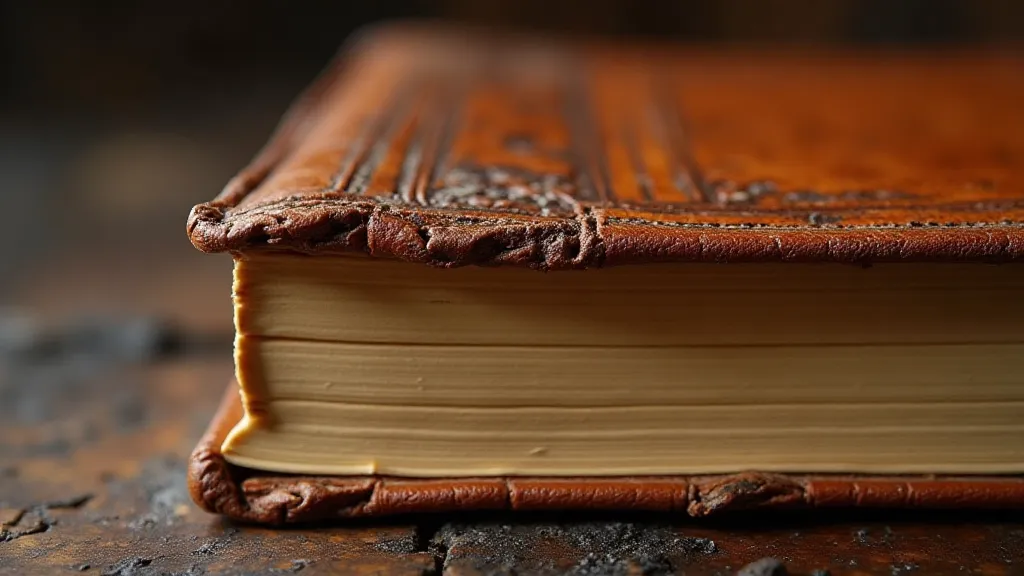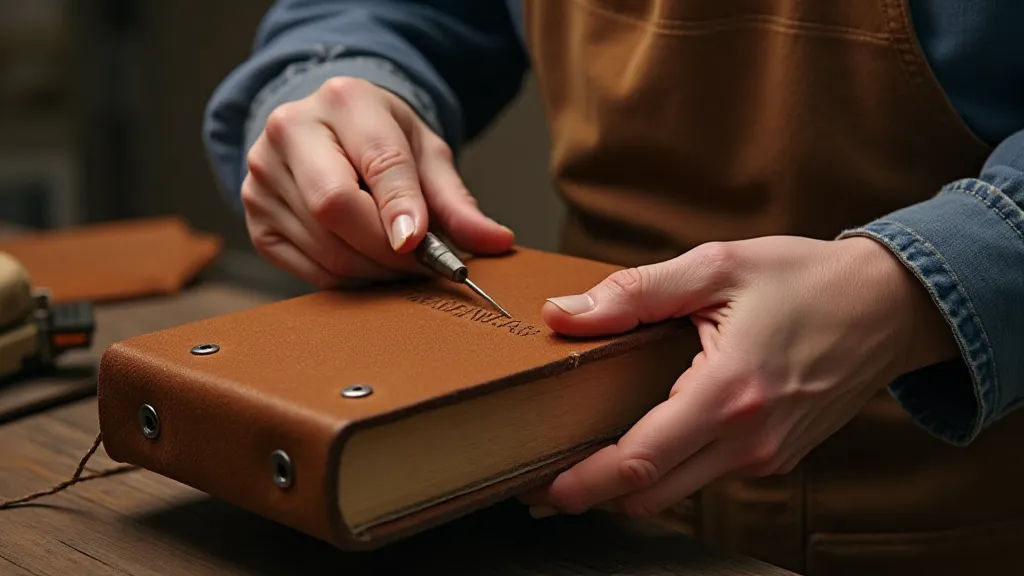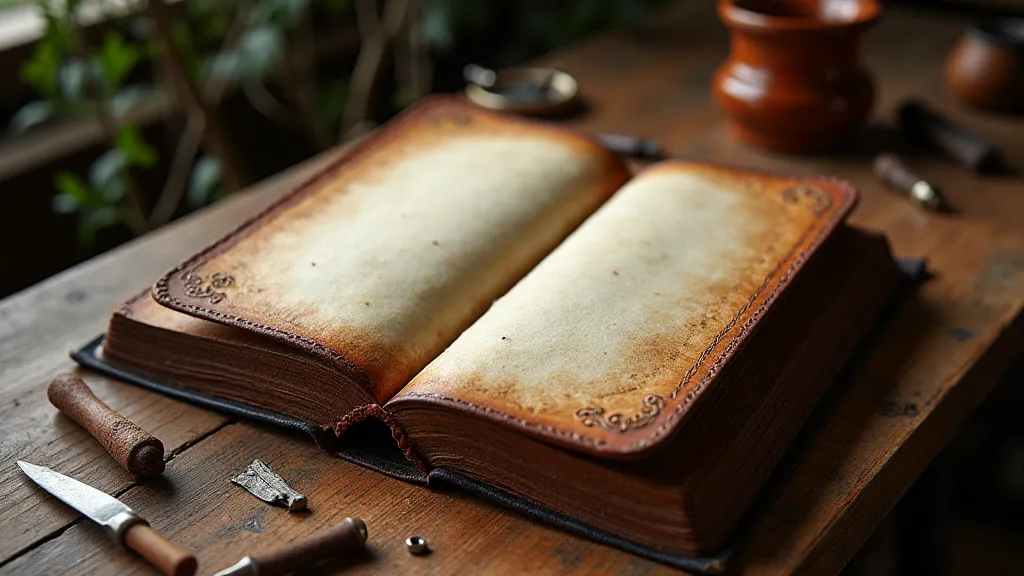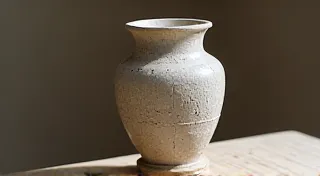The Spine as Spine: A Narrative Relationship in Book Design
There’s a certain resonance, a deep vibration, that runs through antique accordions. Holding one – the bellows collapsing gently, the keys responding with a slightly melancholic tone – it’s like holding the echo of countless stories, of laughter and longing, of journeys taken and memories held. It’s a physical manifestation of narrative, of how something seemingly simple can hold within it a universe of experience. This feeling, I’m discovering, is surprisingly similar to what I feel when I hold an exquisitely bound book, especially one with a hand-stitched leather spine.
The spine of a book is often overlooked. It’s the functional element, the hinge, the connection between the gathered pages. But to reduce it to mere function is to miss a profound truth. The spine is, symbolically, the spine of the narrative itself: its strength, its resilience, and its very form are integral to the story's existence.

A Legacy of Strength: Historical Context
Historically, the spine has been a testament to the bookmaker's skill. Before the advent of adhesive binding – a relatively modern development – books were bound through hand-sewing, often utilizing strong linen or hemp thread. The leather spine, meticulously applied and stitched, provided both structural integrity and aesthetic beauty. Consider the medieval monastic scriptoria; the enduring quality of the books they produced is a direct reflection of the care and precision poured into every aspect of their creation, from the meticulous calligraphy to the durable leather spine.
In those times, a book was an investment, a precious object to be treasured and passed down through generations. The leather wasn’t just any leather; it was carefully selected for its strength, its suppleness, and its ability to age gracefully. Calfskin and goatskin were common choices, offering a desirable combination of durability and a pleasing texture. The stitching wasn’t simply a means of attaching the spine; it was an act of artistry, often employing intricate patterns that mirrored the artistry within the pages. Understanding the historical methodologies used is a fascinating journey, and offers immense insight into these practices - a deeper exploration can be found in Echoes of the Guild: Reconnecting with Historical Binding Methodologies.
Personal Resonance: Rediscovering Craft
My own fascination with leather bookbinding techniques began unexpectedly. I was restoring a collection of antique music sheets, many of which were housed in damaged leather bindings. The brittle paper and crumbling leather seemed to whisper of lost moments, of forgotten melodies. Attempting to repair those bindings wasn’t just about preserving the music; it was about honoring the craft that had created them in the first place.
The process of relearning those historic bookbinding tools felt deeply satisfying. The methodical nature of the work—the careful cutting of the leather, the precise placement of the stitches, the gentle tooling of the cover—demanded a stillness and focus that was almost meditative. It was a direct connection to the hands of the artisans who had created these books centuries before. The very act of repairing these fragmented narratives requires a careful consideration of how the original structure was conceived; for those seeking to approach book repair with a deeper understanding of the inherent storytelling found in damaged bindings, Fractured Narratives: A Guide to Book Repair for the Intrepid Binder offers a useful exploration.
The Craft of the Stitch: Patterns and Techniques
The stitching patterns themselves hold a story. The "Coptic stitch," for example, with its exposed spine and chain-like appearance, evokes a sense of ancient tradition and enduring strength. The "long stitch," often used in contemporary bookbinding, offers a more exposed and textured appearance, celebrating the craft itself. Each stitch pattern contributes to the overall aesthetic and structural integrity of the book.
Choosing the right leather is paramount. Thin lambskin can lend a delicate feel, while thicker cowhide offers a more robust and formal appearance. The tools required – awls, needles, thread, bone folders – are deceptively simple, yet each plays a crucial role in the process. Even the parchment paper used to reinforce the spine contributes to the overall feeling of quality and permanence.

Binding the Spine: A Metaphor for Resilience
The act of binding the spine isn’t merely a technical skill; it’s a metaphorical act of resilience. It’s about holding something together, strengthening its core, and ensuring its ability to endure. Consider the narrative arc of a great story: it often faces challenges, setbacks, and moments of great tension. But it is the underlying structure, the central spine, that allows the story to persevere, to ultimately reach its resolution.
Similarly, a beautifully bound book serves as a tangible reminder of the power of storytelling, of the importance of preserving knowledge, and of the enduring beauty of craftsmanship. It’s a physical embodiment of the narrative’s journey, from its inception to its ultimate form. These stories aren't just held within the binding, they're reflected in the very patterns used, a connection explored further in The Stitch as Cartography: Mapping Narrative Through Binding Patterns.
Collecting and Restoration: A Journey in Time
For those drawn to the beauty of antique books, collecting often becomes a journey through time. Examining the binding – the leather, the stitching, the tooling – offers clues about the book's origins, its history, and the individuals who have cherished it. The subtle wear and tear, the faded gold leaf, the occasional water stain – these are not signs of decay, but rather testaments to a life well-lived.
Restoration, when approached with respect and humility, can be a way of honoring that history. The goal isn’t to erase the passage of time, but rather to stabilize the binding, to protect it from further damage, and to ensure that it can continue to be enjoyed for generations to come. A careful repair of a crumbling spine can breathe new life into an old friend, allowing its story to continue unfolding.

More Than a Binding: A Lasting Legacy
Ultimately, the spine of a book is more than just a functional element; it’s a symbol of strength, resilience, and the enduring power of storytelling. It is a testament to the skill of the craftsperson, the richness of the narrative, and the importance of preserving our cultural heritage. As you hold a book with a hand-stitched leather spine, take a moment to appreciate the artistry, the history, and the profound connection it represents - a connection as vital and enduring as the stories it holds within.
The intricate process of selecting and preparing the parchment itself is a testament to the care and dedication of those who sought to create lasting works. The very act of writing on parchment, of imprinting words onto its surface, was a deliberate act of preservation, a commitment to ensuring that knowledge would endure across generations. This careful consideration of material extends beyond just the parchment; the choice of leather, the type of stitching, all contribute to the overall feeling of quality and permanence. The durability of these materials speaks to the intention of the creator, a desire to craft something that would not only be beautiful, but also long-lasting.
Furthermore, the methods used to prepare these materials have evolved over time, reflecting changing technologies and cultural preferences. Early parchment makers used techniques that were often passed down through generations, while later methods incorporated new innovations. Understanding these changes provides valuable insight into the history of bookmaking and the evolution of artistic practices.





